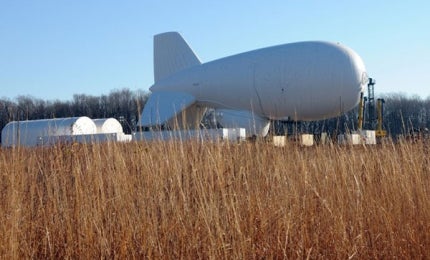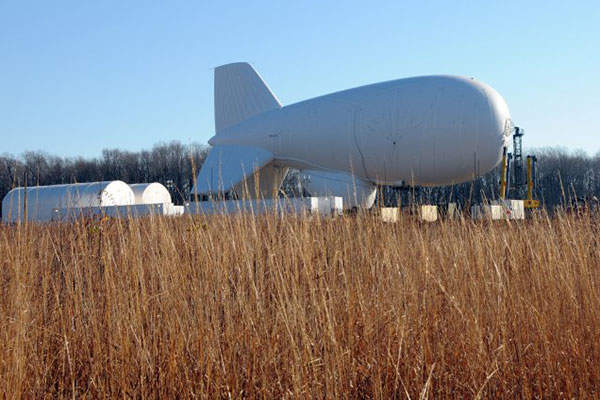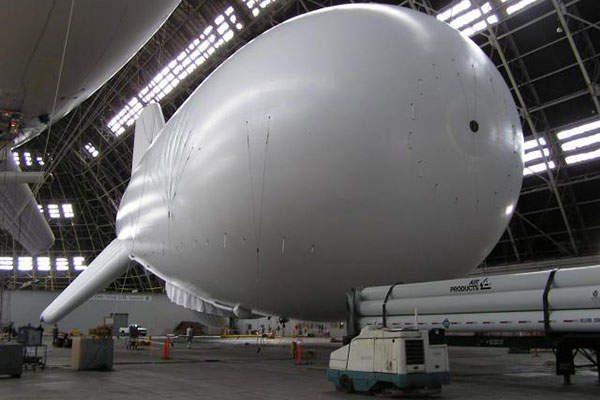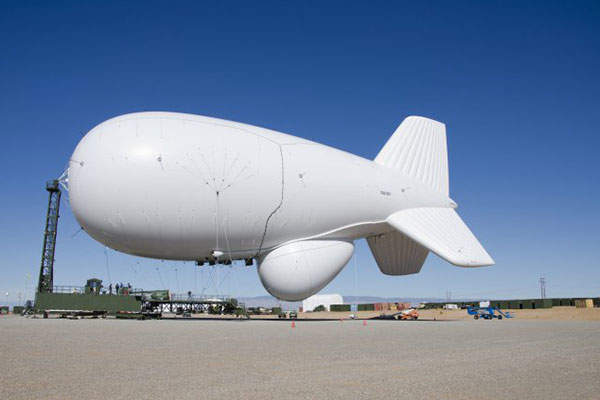
The Joint Land Attack Cruise Missile Defense Elevated Netted Sensor System (JLENS) designed and developed by Raytheon Company provides warfighters with enhanced battlefield surveillance and targeting capabilities against potential threats over long ranges.
The entire JLENS system, known as an Orbit, consists of two aerostats. Each airship is equipped with a powerful radar system, mobile mooring station (MMS), associated ground support equipment (GSE), and a communication and processing group (CPG).
The system is designed to provide defence against fixed or rotary-wing aircraft, air-breathing threats, cruise missiles, unmanned air vehicles, tactical ballistic missiles, surface-moving targets, large-calibre rockets, and ground-moving target indicator.
JLENS can be integrated with a number of intercept systems that are in service with the US Army, Navy and Air Force, including Patriot air and missile defence system, Standard Missile 6 (SM-6), Advanced Medium Range Air-to-Air Missile (AMRAAM) and the National Advanced Surface-to-Air Missile System (NASAMS).
In December 2014, the US Army and Raytheon successfully deployed a JLENS airship equipped with a surveillance radar over Maryland to monitor the airspace. Upon reaching full operational capability, the aerostat will be handed over to the US Army’s A Battery, 3rd Air Defense Artillery. Carrying the fire control radar, the second JLENS airship is scheduled for launch in 2015.
Development of JLENS system
The US Army awarded a $1.3bn contract modification to Raytheon for the development and demonstration of the JLENS in November 2005. A $1.4bn design and demonstration contract was also finalised by them in December 2006.
Raytheon completed a successful system functional review of the JLENS in April 2007 followed by a preliminary design review (PDR) in March 2008. The critical design readiness reviews (CDRR) were performed on a surveillance radar and a CPG in November 2008. The JLENS system’s critical design review was completed in February 2009, while its development testing was completed in December 2013.
JLENS airship design, features, and control
The large aerostats or tethered blimps have a length of 74m and are filled with helium. The airship can reach altitudes up to 10,000ft above the mean sea level and can remain airborne for approximately 30 days. It is capable of integrating other communications and sensors to provide commanders with increased situational awareness of the battlefield.
Scout SV is the reconnaissance variant of the armoured fighting vehicle developed by General Dynamics UK for the British Army.
The JLENS system is controlled from the ground station and is transportable by road, rail, sea and airways. The tethers transmit power to onboard radars and to downlink targeting the data to a computer processor in the ground station.
Radars aboard JLENS aerostats
One of the two airships is equipped with a surveillance radar whereas the other carries a fire control radar (FCR). The powerful fire control radar provides long-range tracking and fire control quality data. The persistent surveillance radar identifies and detects targets over-the-horizon, while providing 360° coverage. Both the radars have identification friend or foe (IFF) capability.
JLENS system tests
The JLENS system’s surveillance radar successfully completed free-space radiation from an elevated airship during a demonstration conducted at the Utah Test and Training Range in February 2009.
Raytheon conducted flight tests of the fire control radar at the Utah Test and Training Range in April 2011. A JLENS blimp successfully performed surveillance missions for 14 days during an endurance test concluded at Utah test range in October 2011.
An intercept test of the JLENS system integrated with a Patriot air and missile defence system was performed in April 2012. The company demonstrated the JLENS’ capability to detect and track swarming boats at long ranges in June 2012. The JLENS system demonstrated its anti-ship targeting capability when integrated with the US Navy’s SM-6 missile in September 2012.
In January 2013, Raytheon demonstrated the JLENS system’s ability to mount a MTS-B (Multi-Spectral Targeting System) EO/IR payload for use in target tracking with the infrared (IR) sensor.
The US Army completed early user testing (EUT) and a 20-day endurance test of the aerostat system in July 2013. The US Army and the US Air Force demonstrated interception of a cruise missile by an AMRAAM missile integrated with the JLENS in August 2013.
One of the two JLENS orbits procured by the US Army was placed in strategic readiness in June 2014. A series of laboratory tests were conducted in October 2014 to prove the JLENS’ ability to comply with North American Aerospace Defense Command (NORAD) for the protection of airspace over the East Coast region of the US.
The Global Missiles and Missile Defence Systems Market 2011-2021
This project forms part of our recent analysis and forecasts of the global missiles and missile defence systems market available from our business information platform Strategic Defence Intelligence. For more information click here or contact us: EMEA: +44 20 7936 6783; Americas: +1 415 439 4914; Asia Pacific: +61 2 9947 9709 or via email.








